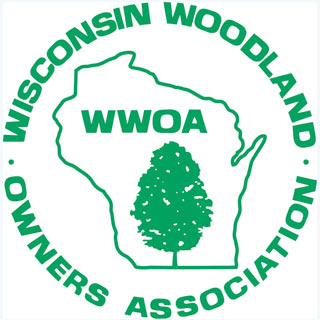Blog Articles
Bobbi Freitag
Bobbi Freitag first heard of WWOA when she and her husband, Rick, attended a woodland owners conference in Ashland in the early 1990s. They had recently purchased their land in the Birchwood pothole lake area and decided to attend the conference to learn more about their northern woodlands. The conference opened Bobbi’s eyes up to sustainable forestry and enlightened her to the vast amount of information available.
Prevent Tick Borne Illnesses
According to the Center for Disease Control, there were roughly 28,500 confirmed cases of Lyme disease in 2015; but the actual number of cases may be 10 times greater. Lyme used to be confined to a few localized areas, particularly around Connecticut and the Northeast, but warmer winter temperatures and urban sprawl-which has reduced natural predators that kill tick-hosting rodents and deer-have caused populations to explode and spread across the country.
Promulgation of Hemlock Woolly Adelgid Interior Quarantine in Michigan
June 6, 2017 To: Stakeholders and Industries Associated with Hemlock The Michigan Department of Agriculture and Rural Development (MDARD) is implementing an interior state quarantine to protect Michigan’s native and cultivated hemlock populations from hemlock woolly adelgid (HWA). HWA has not been found in Michigan until recently where it has been detected at multiple sites in four counties in western Michigan.
Heiser Condolences
Rebecca A. “Becky” Heiser, Baraboo – passed away May 29, 2017. Becky’s husband, Ralph, is the current Chippewa Valley Chapter Chair. Becky and Ralph have been active WWOA members in their local chapters, hosting field days and tours, assisting with annual meeting planning, and giving presentations on growing shiitake mushrooms.
Wisconsin Council of Forestry Announces Strong Support for Funding the Mill Tax
The Governor’s Council on Forestry has announced it’s support for the continued funding of the Forestry Mill Tax. Read the full letter here.
Others in the Forestry Community Now Join WWOA’s Efforts on the Forestry Mill Tax
Lake States Lumber Association, Great Lakes Timber Professionals Association, and Wisconsin Consulting Foresters released their letter to the Joint Committee on Finance opposing the defunding of the forestry mill tax. Read the full letter here.
LAST CHANCE to speak out on the Forestry Mill Tax
VERY SOON the Joint Committee on Finance (JCF) will be taking up the Forestry Mill Tax (or as legislators have been calling it the State Property Tax) issue. The Committee is split on this issue and needs to hear from WWOA members and citizens about the benefits of the Forestry Mill Tax. Your voice and a few minutes of your time CAN make a difference on this very important issue!
Joint Committee on Finance Members
Please select Read More for the full listing of all Joint Committee on Finance Members and their contact information.
Wisconsin Property Tax = Forestry Mill Tax
While we in the forestry community have been discussing the proposed state budget provision which eliminates the collection of the Forestry Mill Tax and instead will use General Purpose Revenue to fund the Forestry Fund for this budget cycle – the Governor and some legislators have been broadcasting their message of eliminating Wisconsin’s Property Tax.
Bat disease takes its toll; Wisconsin sites see 30-100 percent decreases
Contact(s): Owen Boyle, 608-576-2446; Paul White, 608-267-0813 Call goes out to report surviving bats this summer MADISON — A bat disease that has raced across the eastern U.S. and Canada , killing upwards of 7 million bats, is following the same pattern in Wisconsin, winter hibernacula surveys show.
